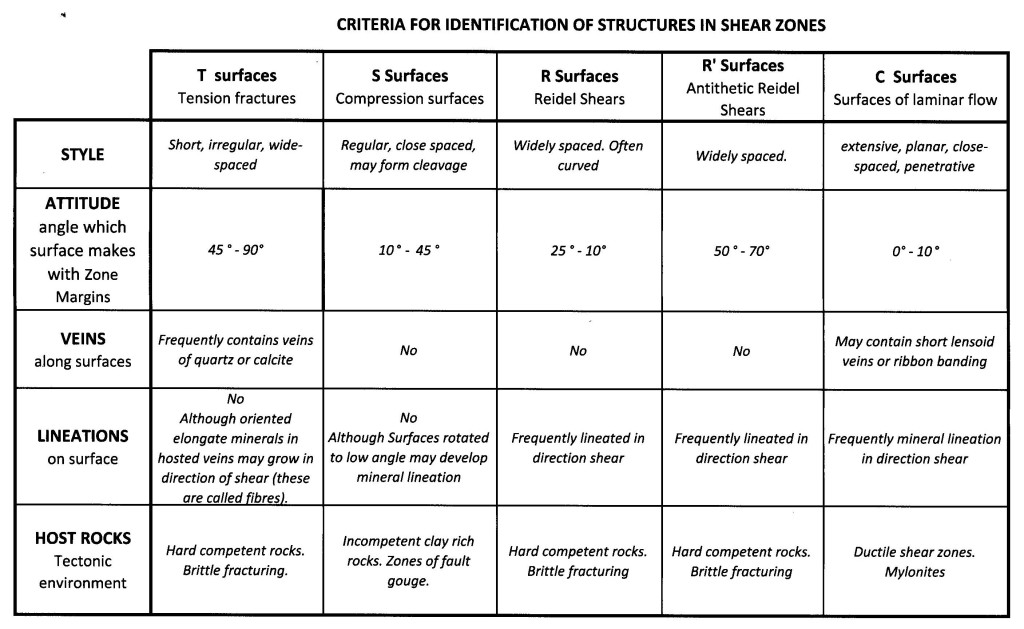Sense of Movement Structures in Fault Zones. Part 3: Identification criteria
Within or adjacent to a fault zone, various minor structures can be present that enable the sense of movement across the fault to be determined. These structures are often called kinematic indicators.
In Part 1 of this series of posts, I classified kinematic indicators as T (tension), S (compressive), R (simple shear) and C (laminar flow). The part described how and why these structures formed and explained their use as kinematic indicators. Part 2 consisted largely of photographs of actual structures in outcrop and drill core. In this final post, simple tabulated rules are provided that enable the various classes of structure to be identified in outcrop.
Most faults, especially large ones, have poor outcrop so when you are lucky enough to find an exposure of a fault it is worthwhile spending time examining it in detail to find out what it can tell you. The type of exposure that is most likely to provide useful kinematic indicator structures is a section that cuts at right angles (orthogonally) across the full width of the zone. A stream section offers the best chance of finding such an exposure. Although relatively rare in nature, orthogonal or near orthogonal sections across fault zones are frequently exposed in man-made outcrop such as road cuttings, trenches, the walls of open cuts, underground openings or in drill core. Next to an orthogonal section, the next most useful fault exposure for the structural geologist to work with is an exposure of the face of a fault – the plane of movement. This is probably the most common type of natural fault exposure.
Don’t expect every exposure of a fault to contain sense of movement indicators that can be reliably identified and interpreted. In fact, most will not. The minor structures within fault zones can be chaotic, apparently contradictory and difficult to assess in three dimensions. If you are not certain how to identify the minor fault structures that you see it is better to walk away and try for a better exposure elsewhere.
Being able to distinguish between different sense of movement structures is vital. Confusing S surfaces with T surfaces, for example, leads to radically-different interpretations of the direction of fault movement. The Table below sets out the criteria that can be used to identify structures. Note that no single criteria is definitive and many of the fields overlap. The more criteria that a particular structure meets, the more certain is its identification.
It is worth bearing in mind that identifying one single structure, or even a number of structures from a single outcrop, does not give 100% certainty as to the overall fault movement. You have good evidence, but the important point is that a credible working hypothesis about the nature of the fault can now be constructed. From this hypothesis predictions can be made which can tested against the evidence from future exposures of the structure. This is the Scientific Method and from this process knowledge is gained.
